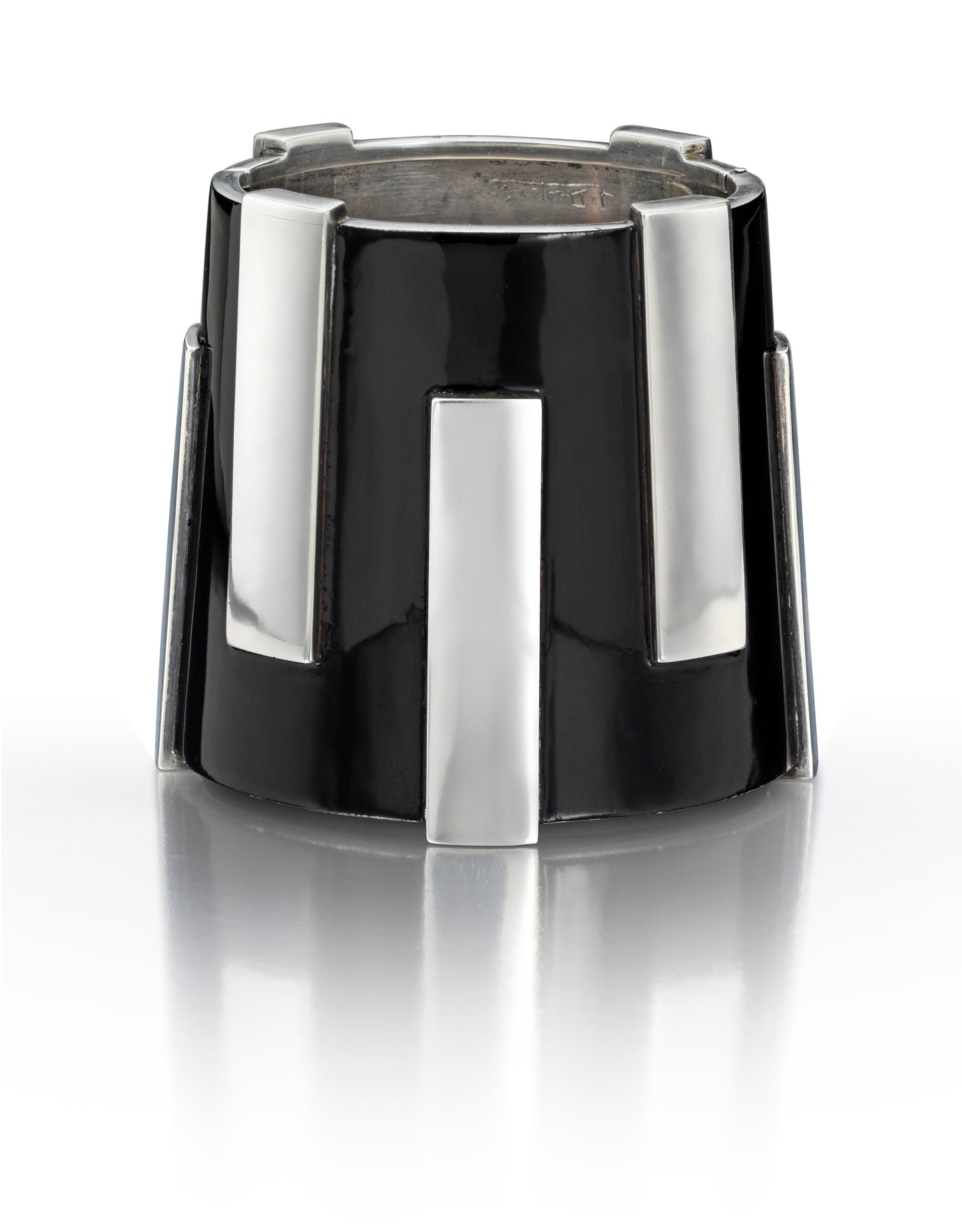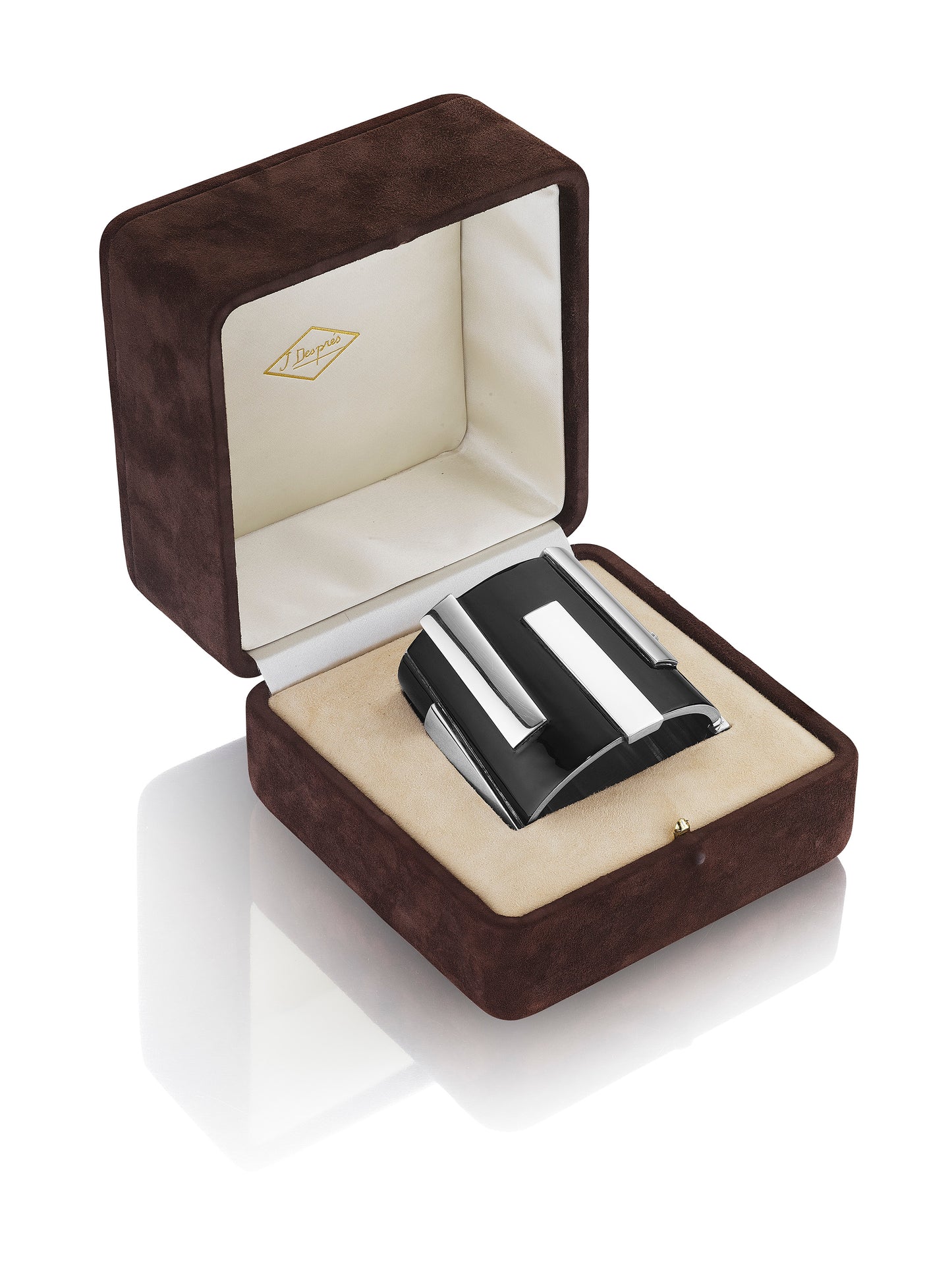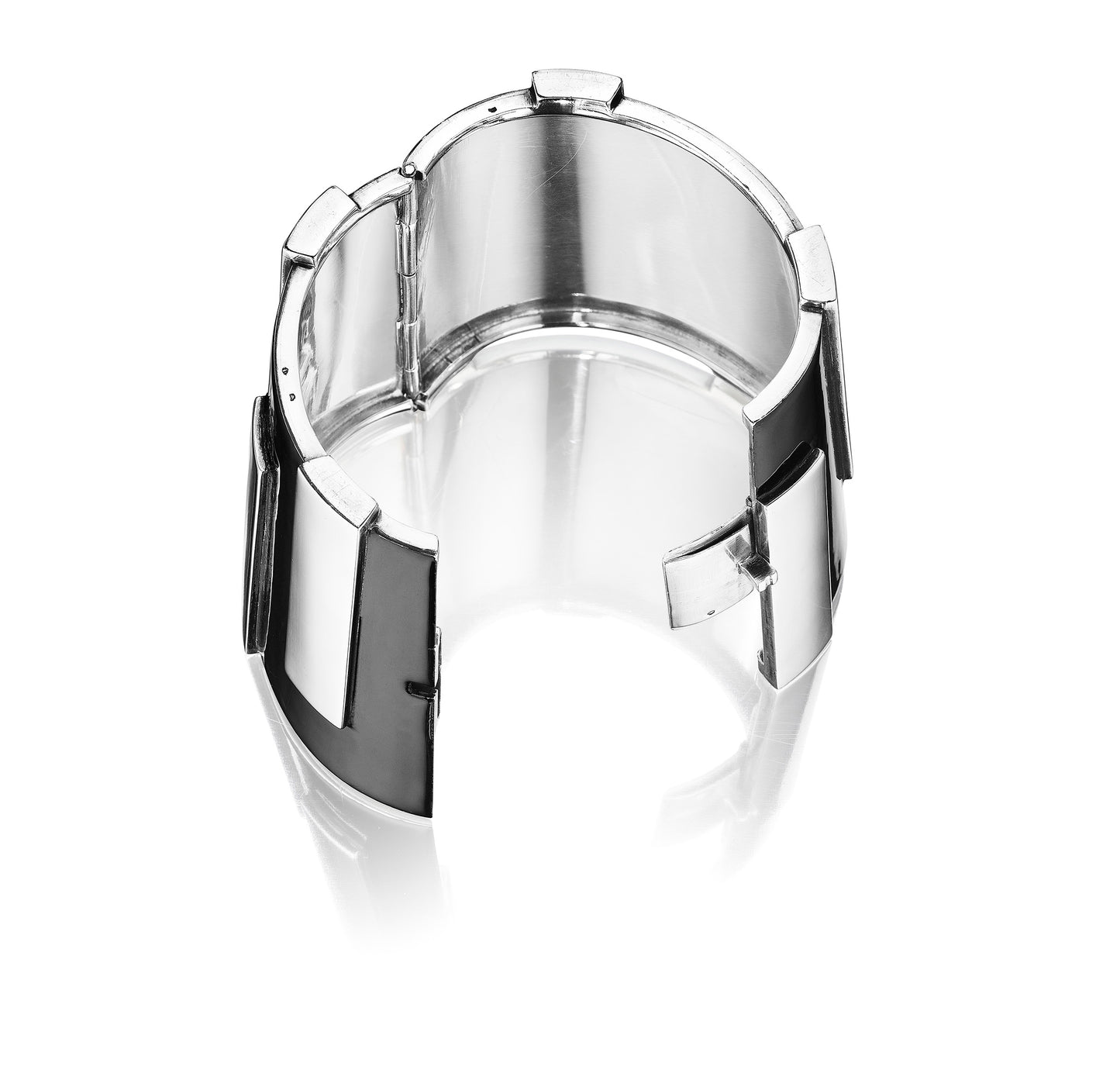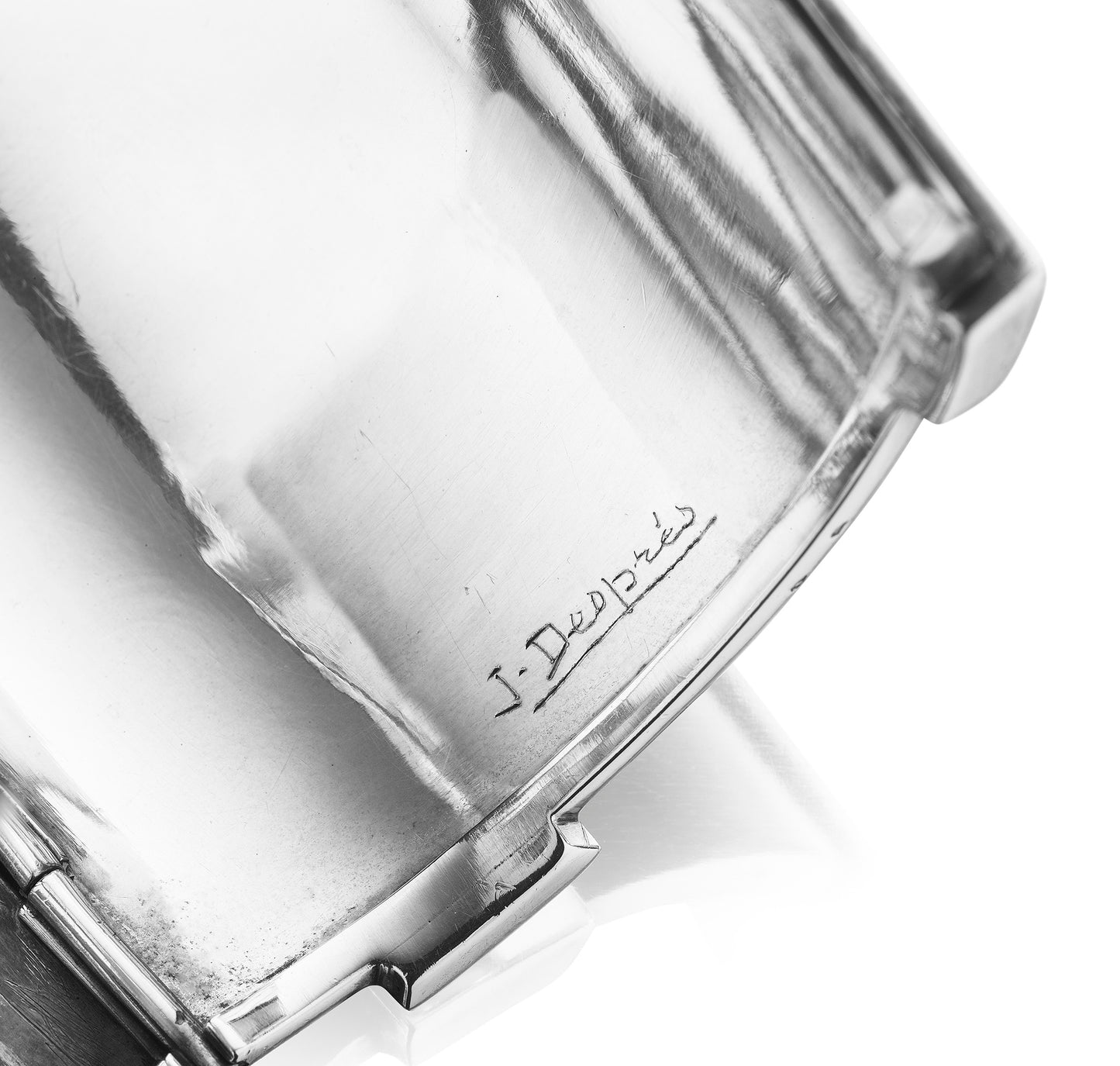ART MODERNE SILVER AND BLACK LACQUER BRACELET BY JEAN DESPRÉS, PARIS, CIRCA 1931
ART MODERNE SILVER AND BLACK LACQUER BRACELET BY JEAN DESPRÉS, PARIS, CIRCA 1931
SOLD
A wide tapered bangle composed of black lacquer and polished silver rectangular plaques alternating sides; mounted in silver, with French assay marks
- Signed J. Després, with maker’s mark
- Registered in the Després archive as model No. 7, 21 September 1931
- Measurements: 2 5/8 x 2 15/16 x 2 3/8 inches
Additional cataloguing
Literature
Gabardi, Melissa. Jean Després maestro orafo tra art déco e avanguardie. Milan: Idea Books, 1999, p. 69.
Gabardi, Melissa. Jean Després: Jeweler, Maker and Designer of the Machine Age. London: Thames & Hudson, 2009, p. 60.
Exhibited
Salon d’Automne, Paris, 1931
Biography
Jean Després was one of the innovative jewelers of the 1920s and 1930s who captured the streamlined aesthetic of the machine age in jewelry. Born in 1889 to a family of jewelers in Souvigny, he apprenticed as a goldsmith in Paris for a friend of his father’s while studying design. Here he met and befriended Amedeo Modigliani, Giorgio de Chirico, Paul Signac, and most important, Georges Braque. During World War I, he worked in a military workshop designing airplane engines; the experience influenced the mechanistic forms he developed as a craftsman designer. In 1929, he joined the Union des Artistes Modernes, a group that challenged the established traditions of jewelry. Després passed away in 1980.
Significance
Emerging in the later years of the Art Deco movement, a new design aesthetic called Art Moderne formed combining the geometry of the period, influenced by Cubism, with the aesthetics of modern machinery. The start of the movement coincided with the formation of the Union des Artistes Modernes (UAM) in 1929. This group of around 20 artists believed that art must be inspired by the new mechanical age and the excitement of modern life. Their manifesto stated “ornament . . . is excessive: get rid of it.” Motivated by the speed and power of new technologies such as cars and planes, these artists struck a delicate balance between proportion, mass, and movement. Members of the UAM who specialized in jewelry included Raymond Templier, Jean Dunand, Georges and Jean Fouquet, Gerard Sandoz, and Jean Després, who practiced these ideals with great intensity throughout his life.
This bracelet by Després is an iconic example of Art Moderne design combining powerful simplicity with machine-inspired design. This bracelet in the form of a gear is directly related to Després’s experience as a draftsman of airplane engines during World War I, and is part of an aesthetic unique to this artist known as “bijoux-moteurs” or motor jewelry. Of massive size, the bracelet is bold in form and constructed at a taper to align to the sliming of the wrist. This subtle design adjustment acknowledges that this gear-like piece is meant to be worn, and, as is shown in a period photo, is elegant on the wrist. Jean Després created each piece of jewelry himself using traditional methods, with nothing mass (or machine) produced. Perfectly arranged, each element of this design is integral to the composition.
Després exhibited this bracelet at the Salon d’Automne, Paris, in 1931. Founded in 1903, the salon was formed as a reaction to the restrictive policies of the official Paris Salon and provided a venue for artists of all disciplines to showcase their innovative designs. His work drew many admirers and was collected by vibrant personalities such as Paul Signac, André Malreaux, Josephine Baker, and later in his career by Andy Warhol. This dynamic bracelet is instantly recognizable as Després, a masterful example of beautiful and wearable Machine Age design.











